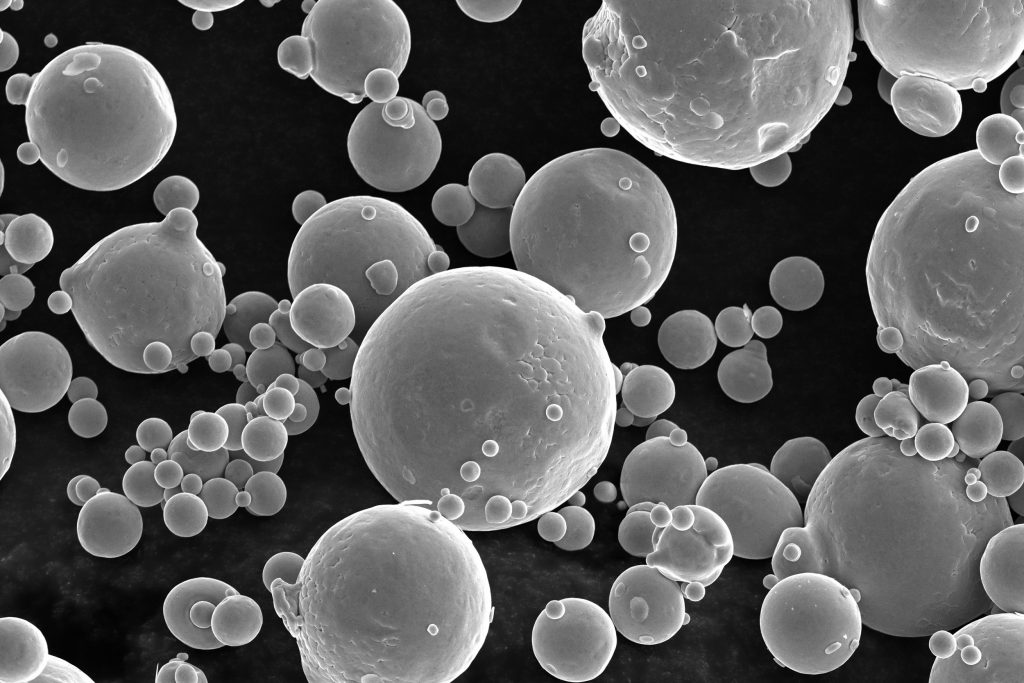Types and Applications of Powder Spheroidization Technology

Powder spheroidization technology, an indispensable component of modern industry and science, can improve the surface characteristics and physical properties of powders, optimize material performance, and meet multifunctional requirements. Currently, powder spheroidization technology has penetrated numerous fields, including pharmaceuticals, food, chemicals, environmental protection, materials, metallurgy, and 3D printing.
Spherical powder preparation technology involves multiple disciplines, including expertise in chemistry, materials science, and engineering. Below, we will explore the various technologies involved in powder spheroidization.
Mechanical Shaping Method
Mechanical shaping methods primarily utilize a series of mechanical forces, such as collision, friction, and shear, to plastically deform and adsorb particles. Continuous processing results in denser particles, and sharp edges are gradually smoothed and rounded by the impact force. Mechanical shaping methods utilize high-speed impact mills, media stirred mills, and other pulverizing equipment to produce fine powder materials. Combined with dry and wet grinding, these methods yield powder materials with finer particle size, narrower particle size distribution, and a certain spheroidization rate.
Mechanical shaping is widely used in the spheroidization and shaping of natural graphite, artificial graphite, and cement particles. It is also suitable for crushing and pulverizing brittle metal or alloy powders. Mechanical shaping utilizes a wide range of low-cost raw materials, fully utilizing existing resources. It offers advantages such as simplicity, environmental friendliness, and industrial scalability. However, this method is not very selective in terms of materials, and cannot guarantee the sphericity, tap density, and yield of the processed particles. Therefore, it is only suitable for producing spherical powders with lower quality requirements.
Spray Drying
Spray drying involves atomizing a liquid substance into droplets, which are then rapidly evaporated in a hot air stream, solidifying into solid particles. The advantages of spray drying are its simplicity and ease of controlling product properties. It is primarily used in the fields of military explosives and batteries.
Gas-Phase Chemical Reaction
Gas-phase chemical reaction uses gaseous raw materials (or evaporates solid raw materials into a gaseous state) to produce the desired compound through a chemical reaction. This compound is then rapidly condensed to produce ultrafine spherical powders of various substances.
Hydrothermal Method
The hydrothermal method utilizes a reactor under high temperature and pressure conditions, using water or an organic solvent as the reaction medium for a chemical reaction. Particle size can be effectively controlled by adjusting parameters such as the hydrothermal temperature, hydrothermal time, pH, and solution concentration.
Precipitation Method
The precipitation method combines metal ions with a specific precipitant through a chemical reaction in a solution, generating tiny, semi-solid colloidal particles and forming a stable suspension. Subsequently, by further adjusting precipitation reaction conditions, such as static aging, slow stirring, or changing the solution environment, these colloidal particles gradually aggregate and grow toward spherical shape, forming a primary spherical precipitate. The resulting precipitate is then dried or calcined to ultimately produce a spherical powder material.
Sol-Gel Method
The sol-gel method typically involves three stages: sol preparation, gel formation, and spherical powder formation. Heat treatment can further improve the structure and properties of the spherical powder, enabling precise control of the particle size and morphology.
Microemulsion Method
The microemulsion method is a liquid-liquid two-phase system preparation method. This method involves adding an organic solvent containing a dissolved precursor to an aqueous phase to form an emulsion containing tiny droplets. Spherical particles are then formed through nucleation, coalescence, agglomeration, and heat treatment. Microemulsion methods are widely used in the preparation of nanoparticles and organic-inorganic composite materials.
Plasma Spheroidization
With the rapid development of high-tech and the urgent need for new nanomaterials and novel preparation processes, the research and application of plasma chemistry are gaining increasing attention. Plasma spheroidization, characterized by high temperature, high enthalpy, high chemical reactivity, and controllable reaction atmosphere and temperature, is ideal for producing high-purity, small-particle spherical powders.
Other methods include deflagration, Gas Combustion Flame Pelletization, Ultrasonic Atomization, Centrifugal Atomization, wire cutting, punching, and remelting, and pulsed micropore spraying.
